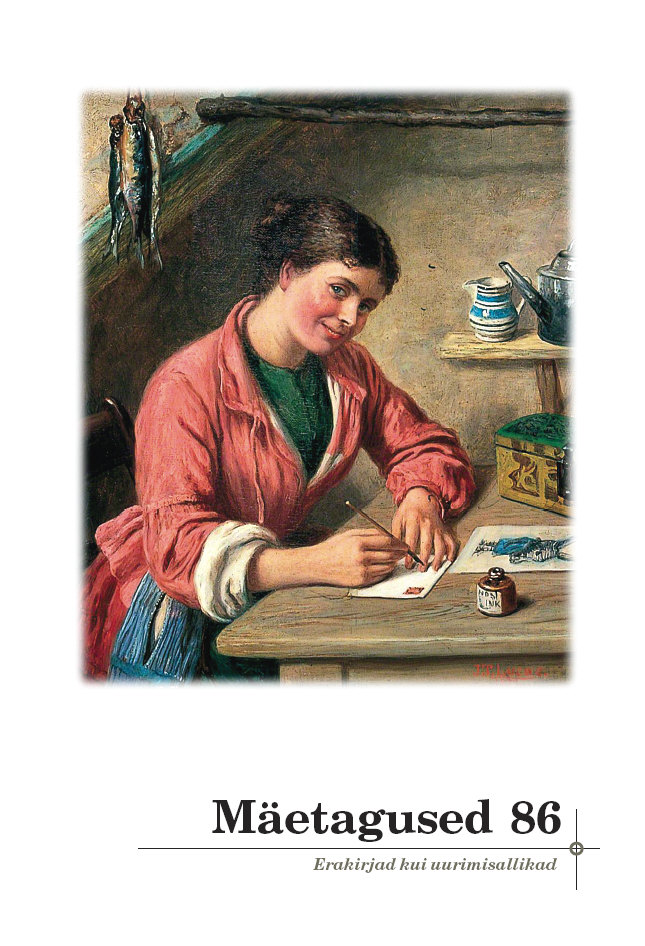Kirjažanrist Euroopa kultuuriloos ning kirjavahetuste avaldamisest ja uurimisest Eestis
About the letter genre in European cultural history and the research and publication of correspondences in Estonia
Author(s): Triinu Ojamaa, Maarja HolloSubject(s): Cultural history, Customs / Folklore, Cultural Anthropology / Ethnology, Culture and social structure
Published by: Eesti Kirjandusmuuseum
Keywords: Estonia; Europe; letter genre; publishing of letters; research of letters;
Summary/Abstract: The article deals with the emergence, development and blooming of the letter genre in European cultural history until the middle of the 20th century. The oldest letters that have survived to our time date from the 3rd-2nd centuries BC and are written in cuneiform. The first major heyday of the literary genre was in the time of ancient Rome, when both politicians and philosophers exchanged letters, but also several writers used the letter form in their works. The so-called canon of letter writing was formed in the Middle Ages, when the art of letter writing began to be taught at the universities. In the 17th century, letter writing manuals and private letters began to be published in books, and in the 18th century it was already very common. The growing popularity of communication by letters is also shown by the fact that in the middle of the 18th century, when English writer Samuel Richardson published three novels in the form of letters, the epistolary novel was born. In the epistolary novels, for the first time the world of feelings and thoughts of the characters was under observation. At the end of the 19th century, communication by letters increased drastically due to the wider spread of literacy throughout Europe. The writing of letters intensified during the First and Second World Wars, which is considered the last major blooming of the letter genre. This fact is also confirmed by studies on the development of the written communication tradition in Estonia. The article also provides a brief overview about the research and publication of private correspondences in Estonia. In the middle of the 20th century, the Estonian Literary Museum began to systematically deal with the autobiographical heritage (incl. letters) of those persons who had a prominent position in cultural history. In 1984, the serial publication Litteraria: eesti kirjandusloo allikmaterjale (Litteraria: Estonian Literary History Source Materials; since 2005 Litteraria: Estonian Cultural History Source Materials) was founded with the aim of making correspondences, but also various biographical notes, photographs, etc., available to the public. Litteraria has never been published regularly; nevertheless, by 2023 the series had published already twenty-eight issues, which are now also available online (https://www.kirmus.ee/et/teadus/e-litteraria). In 1998, Tuna: Ajalookultuuri ajakiri (The Past: Journal of Historical Culture) came out on the landscape of social science and humanities journals. The new journal included the rubric “Estonian Cultural History Archives”, which allowed the researchers to regularly publish archival sources with commentary four times a year. Over the years, several voluminous text-critical publications of correspondences have been published in parallel with the issues of Litteraria and Tuna, for example, “Akadeemia kirjades” (“Academy in letters”, Olesk 1997), “Minu lamp põleb” (“My lamp is on”, Annuk & Metste 2015), and “Kallid krantsid: Kirjad vangilaagritest ja asumiselt Siberis 1946–1954” (“Dear friends: Letters from prison camps and deportation sites in Siberia 1946–1954”, Kross 2021). The published correspondences have a different historical background, but the common feature of all the authors of the letters is their close connection with Estonian literature. Several historians, literary scholars, cultural historians, folklorists, and philosophers have used private correspondences as source material for their in-depth studies. The analysis of scientific articles of the last decades shows that letters are useful primarily as a source of information that helps to open the hidden aspects of some cultural-historical phenomenon or historical event, for example, the world wars. In addition, different aspects of epistolary practices are also analysed, such as the peculiarities of means of expression, communicativeness or intersubjectivity of letters, etc. Until the turn of the century, prominent creative figures in Estonian cultural history dominated among the authors of the letters used in the studies. In recent decades, a new trend has emerged which shows that researchers have begun to pay more attention to, for example, the love letters and war letters of ordinary people, as well as letters in which the writer shares with the addressee various information about joys and worries of everyday life.
Journal: Mäetagused. Hüperajakiri
- Issue Year: 2023
- Issue No: 86
- Page Range: 5-30
- Page Count: 26
- Language: Estonian

